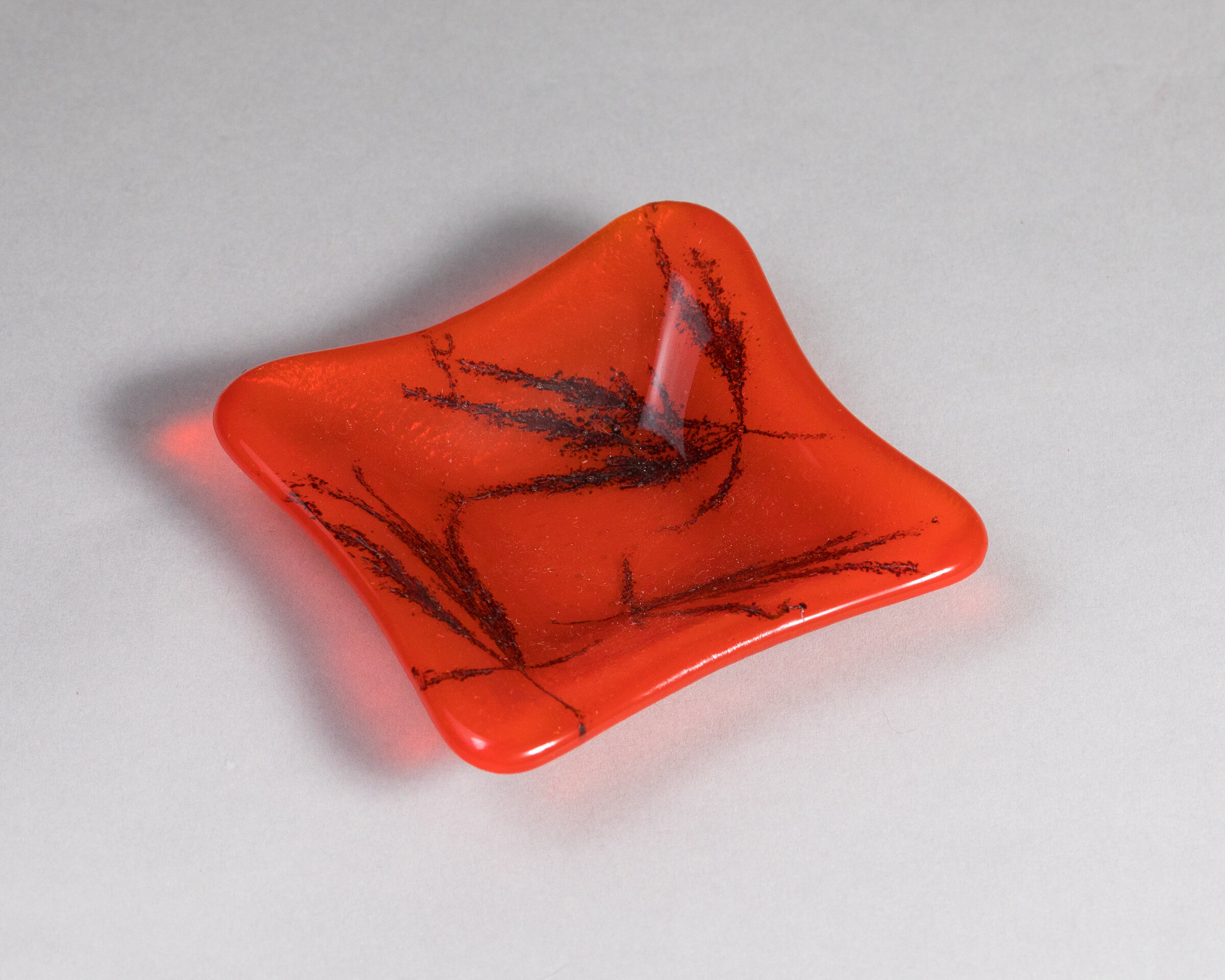I've been learning techniques in glassblowing and fused glass since the beginning of last year. Fused glass seems like puzzle solving to me much of the time. However, glassblowing is much more akin to woodturning than I would have ever thought. How so? Both involve rotating material that is shaped, both have highly specialized tools and equipment, both engage the hands and mind during the crafting with an intensity in focus that takes one into a different realm of awareness.
There are lots of differences, of course. Glassblowing often requires a team of craftspeople to complete a project, and the person who designs the piece is considered the artist. This is a concept that is foreign to woodturners. In woodturning, the designer is usually the sole maker involved in creating a piece. The way the material is rotated is also completely different. For example, in woodturning the lathe rotates the material towards the turner while he or she applies the tool - using both hands - to make a form. In glass blowing, the gaffer (the one sitting at the bench) or an assistant turns the pipe or rod holding the hot glass while the gaffer uses a tool to shape the material. The pipe or rod is rotated toward and away from the gaffer, using the left hand, while the right hand uses the tool on the hot glass, which is hanging off the end of the pipe or rod. Hot glass has to be kept in motion or the glass can drop onto the floor or become a misshapened mess. Wood secured on the lathe is much better behaved than liquid glass on a blowpipe.
Having the ability to multi-task and complete tasks in rapid succession is essential in glassblowing, and one certainly gets a full-body workout from spending several hours at a time in the hotshop. If glass gets too cold while it's being worked, it will crack or break. Woodturning is much more sedate in its pace - you can walk away from the lathe and return hours or days later and continue working the wood. That only applies to dry wood, of course. Turning green wood is another challenge that requires a faster working time in order to keep the wood from cracking as it dries.
To make a hollowform in woodturning, the maker removes the material from the inside of the wood blank using specialized tools. A hollowform in glass is formed by blowing a bubble into molten material, which then hardens as it cools. Woodturning is a subtractive process - removing wood to make a shape. Glassblowing is an additive process - gathering material from the furnace and adding it to the pipe or the form that is in the process of being made.
Both activities have their dangerous sides - a spinning block of wood can cause a lot of damage if it is thrown off the lathe and one can be injured in numerous other ways, too. In glass blowing, the temperature of the glass exceeds 2000°F as it comes out of the melting furnace and the working temperature of the glass is not much cooler. When a piece is finished the temperature is closer to 1000°F. Burns are the most common injury in glassblowing, but one can also get cut in various ways, some torches can cause damage to the eyes if protective gear is not worn, and I would hate to drop some of the things we use in the hotshop on my foot...
Common aspects of both crafts include the making of functional objects (tumblers, cups, vases, bowls, plates, candle holders, etc.). Both crafts can be used to make sculptural objects or purely decorative ones. I think most people have a greater appreciation for glass than wood, unfortunately.
Although I'm approaching my two-year anniversary in learning to blow glass, I'm just now becoming comfortable with the material and tools enough that I can actually make things that people think are cool. In contrast, my beginner's stage in woodturning lasted only a few months. At an equivalent stage in my woodturning adventure I was gaining attention (nationally and internationally) for the work I was making. I don't think that will ever happen with my glassblowing adventure, but I'm having a whole lot of fun.
Here's what I've been making in the hotshop this past month. I'm just happy that I can actually make something people can recognize as the object I intend it to be ;-).













